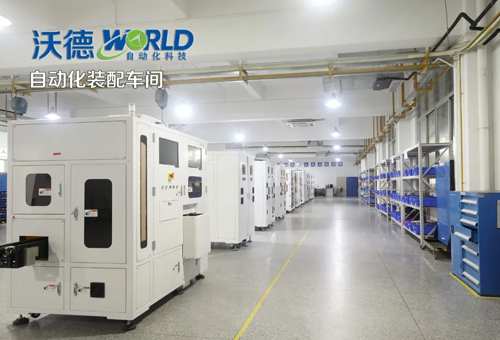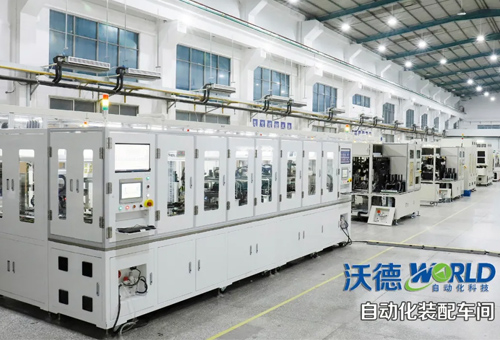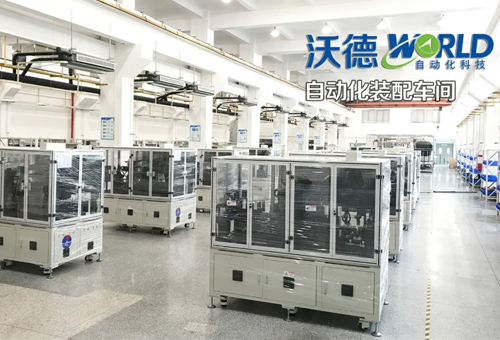Today, we will talk about the design of non-standard automation products. There are five principles worthy of your attention in the design process. These five principles are synergistic and cooperative with each other, and they are conditions and foundations for each other. Only by taking into account these five design principles can we Really do a good job in the design of a non-standard automation product.
01 Cost priority principle
The biggest feature of non-standard product design is small-scale production, single function and limited adaptability. For such a product, if we want to "make money" from the very beginning, we need to strictly control the cost. Cost control can be considered from the following aspects:
1. R&D cost
Try to choose Jingbingqiang as the project director of non-standard product design in the future. In the allocation of project members, it should be as few and precise as possible, and the comprehensive ability of project personnel should be as high as possible. The project manager must not only have sufficient experience and ability in program design, but also have corresponding responsibilities and skills in team coordination, and at the same time take into account the operational efficiency of the team.
2. Purchase cost
The control of procurement costs also requires the close cooperation of R&D engineers. When selecting parts and components, try to follow the principles of generalization and standardization, and unify these parts suppliers as much as possible to form a long-term and mutually beneficial strategic partnership; at the same time, negotiate the payment of purchases. method, using quarterly or annual payments as much as possible, in order to use as little working capital as possible.
3. Outsourcing costs
In terms of structural design, it is necessary to make each functional component modular and generalized as much as possible, and its essence is still composed of different functional components. There are still many commonalities in the selection and use of many functional components. When outsourcing processing, try to do large-scale and batch processing of these functional parts, and form long-term strategic cooperative relations with manufacturing suppliers, through long-term and stable cooperation, to improve outsourcing efficiency and reduce outsourcing processing costs.
4. Assembly cost
This also involves the structural processing of non-standard designs and the realization and installation of functional components. The structure should be simplified, compact, single, and standardized as much as possible. Those that can be outsourced will never be outsourced, and those that can be outsourced will never be outsourced. Self-made; at the same time, fully explain and explain with the assembly technician before assembly, and form a standardized assembly process and process, so that the entire assembly process can be carried out without obstacles.
5. Debugging costs
The commissioning cost depends on the depth of project research and analysis before the non-standard design, as well as the skill and experience of the project designer, and more on the on-site adaptability and technical proficiency of the on-site commissioning engineer. The best people stand on the front line, and they are the greatest guarantee for the success of the project.
6. After-sale cost
The biggest fear of non-standard design is the uncontrolled increase in after-sales cost. This is one of the reasons why non-standard design is expensive, and it is also the most uncontrollable part of non-standard design cost. Whether a project is profitable or not is largely focused on after-sales. The control of this cost should be fully pre-judged and analyzed in all aspects of the pre-sale.

02 Quality Assurance Principles
1. Engineer's design ability
For non-standard design, because it is a "one-shot deal", there is no chance and budget for trial and error. If you succeed, you will be happy, but if you fail, you will lose all the money, so it is a test of the design engineer's personal experience. and ability.
Especially for the project design engineer, the principled right or wrong of the scheme is the basis for whether the maintenance team is doing a "right thing". If there is a principled error in the scheme, then all subsequent efforts of the team will be "diametrically opposed". Useless work not only wastes the company's human, financial and material resources, but more importantly, loses the opportunities and qualifications for market competition.
At the same time, we also need to take into account the details of non-standard design. A good and reliable design details are king. The stability and usability of non-standard products must come from the details. The ability of design engineers Competition is often reflected in the mastery and application of details.
2. Quality of purchased parts
For product managers, we can only believe in the phrase "cheap is not good, and good is not cheap", and any reliable and fully functional parts will not be obtained at an unfair price. For product managers, it is a gamble, with experience and luck.
Many products use good accessories, but there are still mistakes. Some products use very common accessories, and there is a probability that they will run well for a few years, so this largely depends on the project manager's choice.
For the design of non-standard products, it is recommended to use better accessories as much as possible. Although the initial cost is somewhat higher, it has a great chance of reducing the after-sales cost for us in the later stage, and it can ensure the quality of our products in the market and customers. A good reputation is not only for the consideration of product cost, but also for the consideration of the company's product marketing and corporate image.

03 Process Control Principles
The control of the process is mainly reflected in two departments. Of course, these two departments also have a great relationship with the cost, but more still depends on the design ability of the designer:
1. Machining process control
For non-standard products, certain outsourced processing parts are necessary. How to ensure the reliability and low cost of the processing technology from the design point of view is the responsibility of the design engineer. The same functional component meets the same functional requirements. The cost of 1,000 yuan and a 15-day cycle, but yours requires a cost of 1,500 yuan and a 20-day cycle. This is the defect and deficiency of your design ability. At the same time, we must fully consider the conditions of the supporting industry chain around the enterprise. For example, the equipment situation, technological level and worker level of the outsourcing processing factory, only when these factors are taken into account in our product design, can we truly realize the control of the machining process.
2. Control of assembly process
The control of the assembly process is the same as the control of the machining process. Most of it comes from the ability of the design engineer. Of course, we also need to combine the processing quality, the supporting measures of the assembly workshop, the equipment of tooling and inspection tools, and the process flow and process arrangement. rationality, etc. to implement. These factors that need to be considered are the responsibility of a non-standard product project manager, and it is a project planning principle that requires sufficient preparation and plans. If you have a mentality of where you go, there is almost no chance of winning a non-standard product design, because the product cycle and price do not give you enough room to correct your mistakes and mistakes. and opportunity.

04 Periodic Accounting Principles
The design of non-standard products and the calculation of the cycle are very pivotal. For many engineers, as long as the product is not too complicated, everyone has the ability to take orders, but in a relatively short period of time, from design, outsourcing and outsourcing, assembly and debugging, and other links can be scientifically The assignment and completion of the system still test the ability of the project engineer. This is not only the design ability, but also the ability to allocate various resources on the opponent, the ability to master the upstream and downstream industrial chains of the product, and the ability to control all aspects of the project.
One of the characteristics of non-standard design is that the cycle is short, the success rate is high, the upstream and downstream supply chains are complex, the product is highly targeted, and there is no good reference object and sufficient design experience. Almost every non-standard design is correct. A life-and-death test and baptism of team members is also a rebirth from ashes again and again.
At the same time, many links are uncontrollable in the estimation of the cycle, such as upstream and downstream suppliers, because most of the non-standard designs are single-piece production or small batch production, it is difficult for upstream and downstream suppliers to cooperate with each other. There are enough reasons to mobilize their enthusiasm and desire to cooperate. Most of the time, they don't care if they have your "no pain and no itching" small order, so they must make great efforts in the equipment and control of the supply chain.
For those links that can be controlled, we must try our best to buy as much time as possible, and leave this time for those links that are not controllable, in order to have a good dynamic balance for the entire project. This is every person engaged in non-standard product design. things to keep in mind.

05 Principles of after-sales evaluation
In the previous section on cost control, we mentioned the greater impact of after-sales costs. In fact, after-sales costs have a lot to do with the design nature of non-standard products. A mature product goes from R&D to trial production, from trial production to trial production, and from trial production to trial production. To perfection, from perfection to product finalization, this is a step-by-step process.
However, due to the uniqueness of its product market, non-standard products have eliminated multiple steps such as "trial production, trial production, and improvement". Basically, it is a route from research and development to assembly, from assembly to use, which largely determines the product. The immaturity of , even the best design engineers, there are occasional mistakes.
Therefore, we should not be too demanding on R&D engineers. We can only use some mechanisms, experience and design capabilities to ensure the maturity and practicality of the product as much as possible. Even if we cannot achieve 100%, we must integrate some pivotal functions and structures. Deal with it well, so that this product has more plasticity. Only in this way will we be able to improve and improve in the future. Do not make mistakes and defects in product design principles, otherwise you will only lose money.
At the same time, we must also maintain good communication with the end users of the product, make up for some small mistakes in the design of the product with high-quality service and a good attitude, and use improvement plans in the subsequent after-sales process to calm customers. Dissatisfaction and appeals that arise.
Only in this way can we truly mature from the promotion of the project and make the company prosper from the sales of products.
